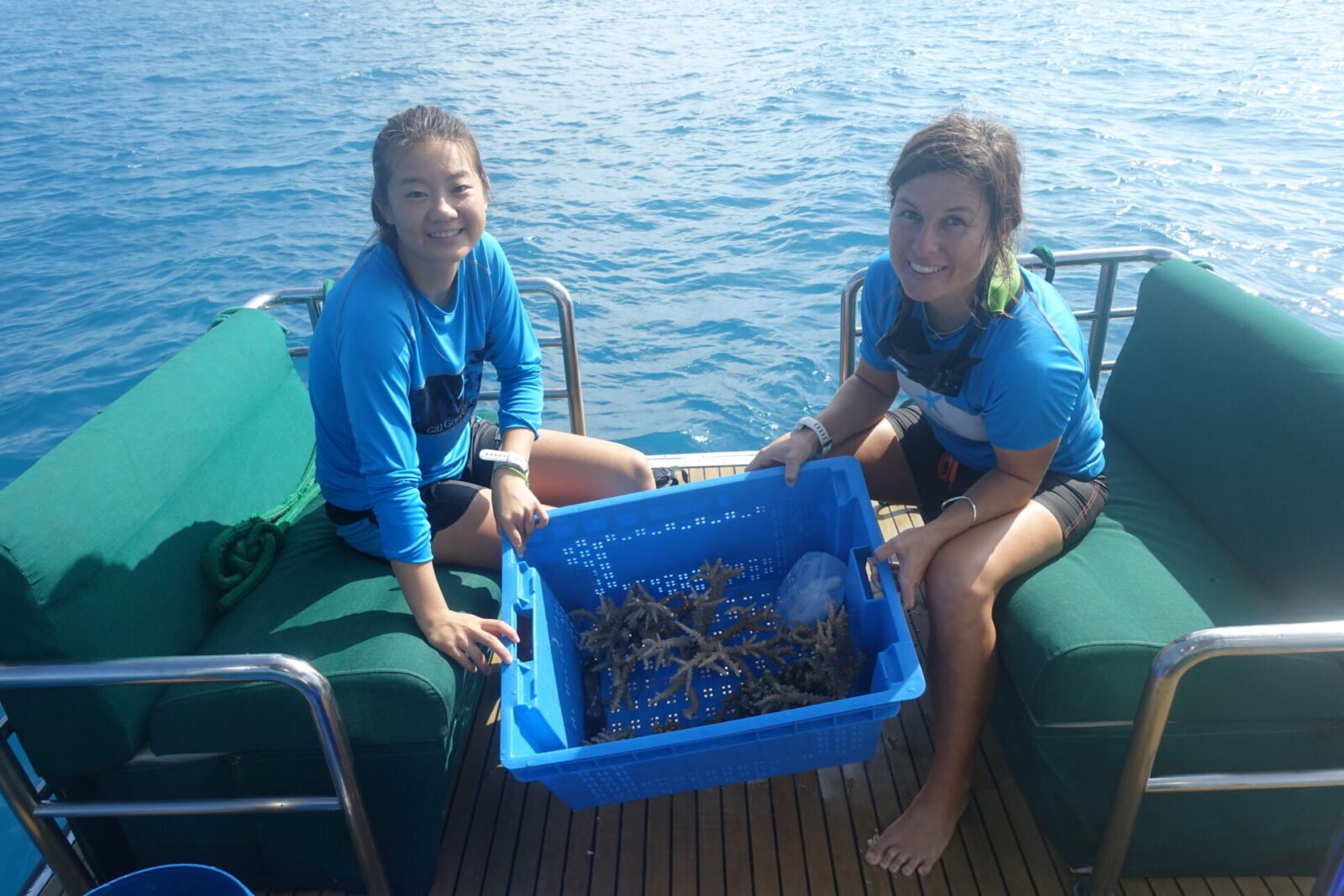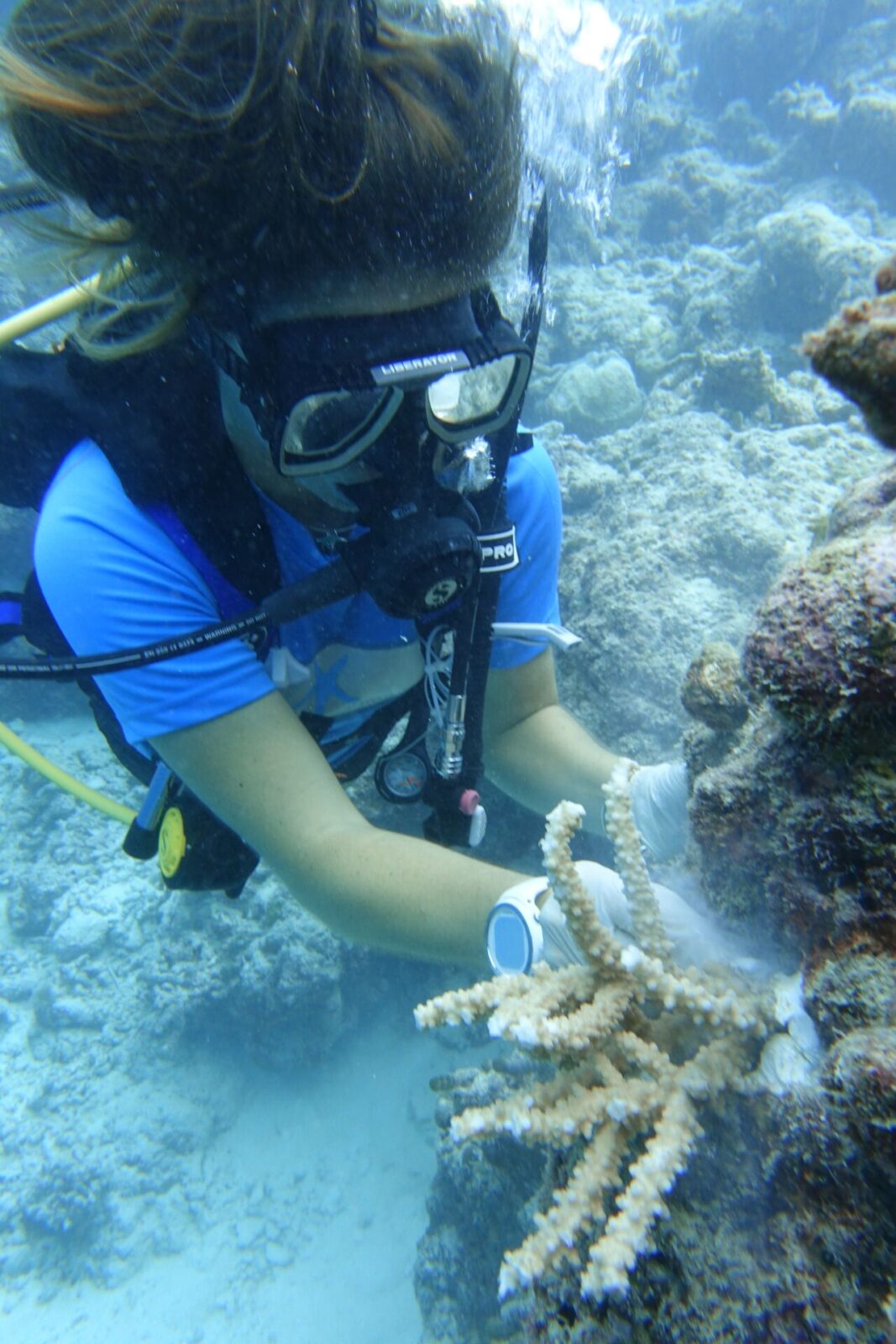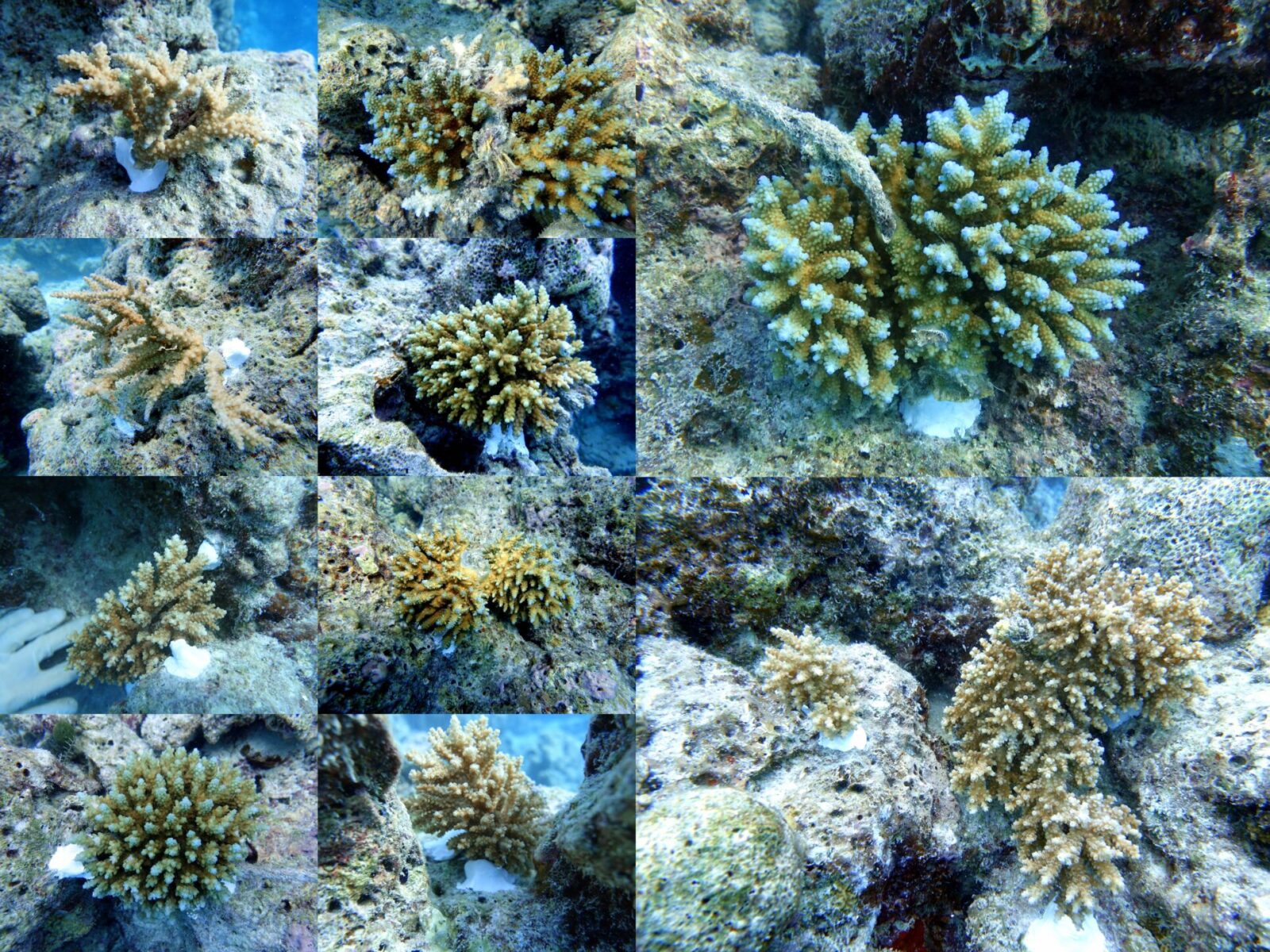This month we have begun to transplant some coral colonies from our older lines out onto the One Palm Island reef. We have chosen an area on the drop off at between 5 and 6 metres, as the corals need to be transplanted to the same depth in order to give them the best chance of survival. We have chosen a mixture of species including Acropora tenuis, Acropora millepora, Acropora plantaginea and Acropora hemprichii, all of which have grown well in our nursery and were found on our house reef before the 2016 bleaching event. The coral bleaching event in 2016 caused a lot of Acropora species to disappear from the shallow reefs around the Maldives, so our transplanting efforts aim to replenish the reef of these important species. Read more about the bleaching event here https://gili-lankanfushi.com/mb-blog/coral-bleaching/
Coral transplanting can be a very delicate process as it involves relocating living animals from an environment they are used to into a new one. Some past attempts have proven to be unsuccessful due to predation on the transplanted colonies. Instead of transplanting all the healthy mature colonies we have our in nursery in one attempt, we have carried out an initial trial batch first, with methods we developed after detailed planning and research. There is very limited literature on transplanting successes and failures in the Maldives thus our attempts will also be valuable information for the coral community.
We are closely monitoring our colonies and if these initial trials prove successful (fingers crossed), then we will be able to continue outplanting the abundant healthy colonies in our nursery in larger quantities!

Marine Biologists Sarah and Tiana, with some of the colonies ready to be planted.
Coral colonies are attached initially using an epoxy putty to ensure they stay in place, they will eventually grow onto the substrate themselves.
After outplanting, the colonies are measured and closely monitored.
Some of our newly attached colonies.